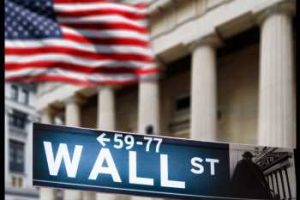U.S. Stocks Finish Choppy Trading Day Modestly Higher

Following the pullback seen during trading on Wednesday, stocks showed a lack of direction throughout the session on Thursday. The major averages spent most of the day bouncing back and forth across the unchanged line.
The major averages eventually ended the session modestly higher. The Dow inched up 18.72 points or 0.1 percent to 33,999.04, the Nasdaq rose 27.22 points or 0.2 percent to 12,965.34 and the S&P 500 edged up 9.70 points or 0.2 percent to 4,283.74.
The choppy trading on Wall Street came as traders expressed some uncertainty about the near-term outlook for the markets following recent strength.
The major averages have shown a substantial recovery from their June lows, reaching their highest levels in almost four months.
Lingering concerns about the outlook for the economy, interest rates and inflation have raised questions about whether the markets can sustain the upward move.
“Stocks will most likely struggle for direction for the rest of the summer as Wall Street is still uncertain with how aggressive the Fed will be in September,” said Edward Moya, senior market analyst at OANDA.
The lackluster performance on Wall Street also came following the release of a mixed batch of U.S. economic data.
Before the start of trading, the Labor Department released a report unexpectedly showing a modest pullback in first-time claims for U.S. unemployment benefits in the week ended August 13th.
The Labor Department said initial jobless claims edged down to 250,000, a decrease of 2,000 from the previous week’s revised level of 252,000.
Economists had expected jobless claims to inch up to 265,000 from the 262,000 originally reported for the previous week.
The Federal Reserve Bank of Philadelphia also released a report showing regional manufacturing activity unexpectedly returned to growth in the month of August.
The Philly Fed said its diffusion index for current activity jumped to a positive 6.2 in August from a negative 12.3 in July, with a positive reading indicating growth. Economists had expected the index to rebound to a negative 5.0.
Meanwhile, the National Association of Realtors released a report showing another significant decrease in existing home sales in the month of July.
NAR said existing home sales plunged by 5.9 percent to an annual rate of 4.81 million in July after tumbling by 5.5 percent to a revised rate of 5.11 million in June.
Economists had expected existing home sales to slump by 4.5 percent to a rate of 4.89 million from the 5.12 million originally reported for the previous month.
Existing home sales declined for the sixth consecutive month, falling to their lowest annual rate since May 2020.
A separate report released by the Conference Board showed a continued decrease by its reading on leading U.S. economic indicators in the month of July.
The Conference Board said its leading economic index fell by 0.4 percent in July following a revised 0.7 percent decrease in June.
Economists had expected the index to decline by 0.5 percent compared to the 0.8 percent drop originally reported for the previous month.
“The US LEI declined for a fifth consecutive month in July, suggesting recession risks are rising in the near term,” said Ataman Ozyildirim, Senior Director, Economics, The Conference Board.
Sector News
Most of the major sectors ended the day showing only modest moves, contributing to the lackluster performance by the broader markets.
Energy stocks moved sharply higher, however, benefiting from a substantial increase by the price of crude oil. Crude for September delivery surged $2.39 to $90.50 a barrel amid renewed supply concerns.
Reflecting the strength in the energy sector, the Philadelphia Oil Service Index spiked by 4.7 percent, while the NYSE Arca Natural Gas Index and the NYSE Arca Oil Index shot up by 2.5 percent and 2.2 percent, respectively.
Significant strength was also visible among networking stocks, as reflected by the 2.9 percent jump by the NYSE Arca Networking Index.
Cisco Systems (CSCO) led the networking sector higher, soaring by 5.8 percent after reporting better than expected fiscal fourth quarter results and providing upbeat guidance for the current quarter.
Semiconductor and computer hardware stocks also saw considerable strength on the day, while commercial real estate and biotechnology stocks moved to the downside.
Other Markets
In overseas trading, stock markets across the Asia-Pacific region moved mostly lower during trading on Thursday. Japan’s Nikkei 225 Index slumped by 1 percent, while China’s Shanghai Composite Index fell by 0.5 percent.
Meanwhile, the major European markets moved to the upside on the day. While the U.K.’s FTSE 100 Index rose by 0.4 percent, the German DAX Index and the French CAC 40 Index both climbed by 0.5 percent.
In the bond market, treasuries pulled back well off their best levels, ending the day modestly higher. As a result, the yield on the benchmark ten-year note, which moves opposite of its price, edged down by 1.3 basis points to 2.880 percent after hitting a low of 2.835 percent.
Looking Ahead
A lack of major U.S. economic data may lead to another lackluster session on Friday, as traders look ahead to next week’s Jackson Hole economic symposium.
Source: Read Full Article
